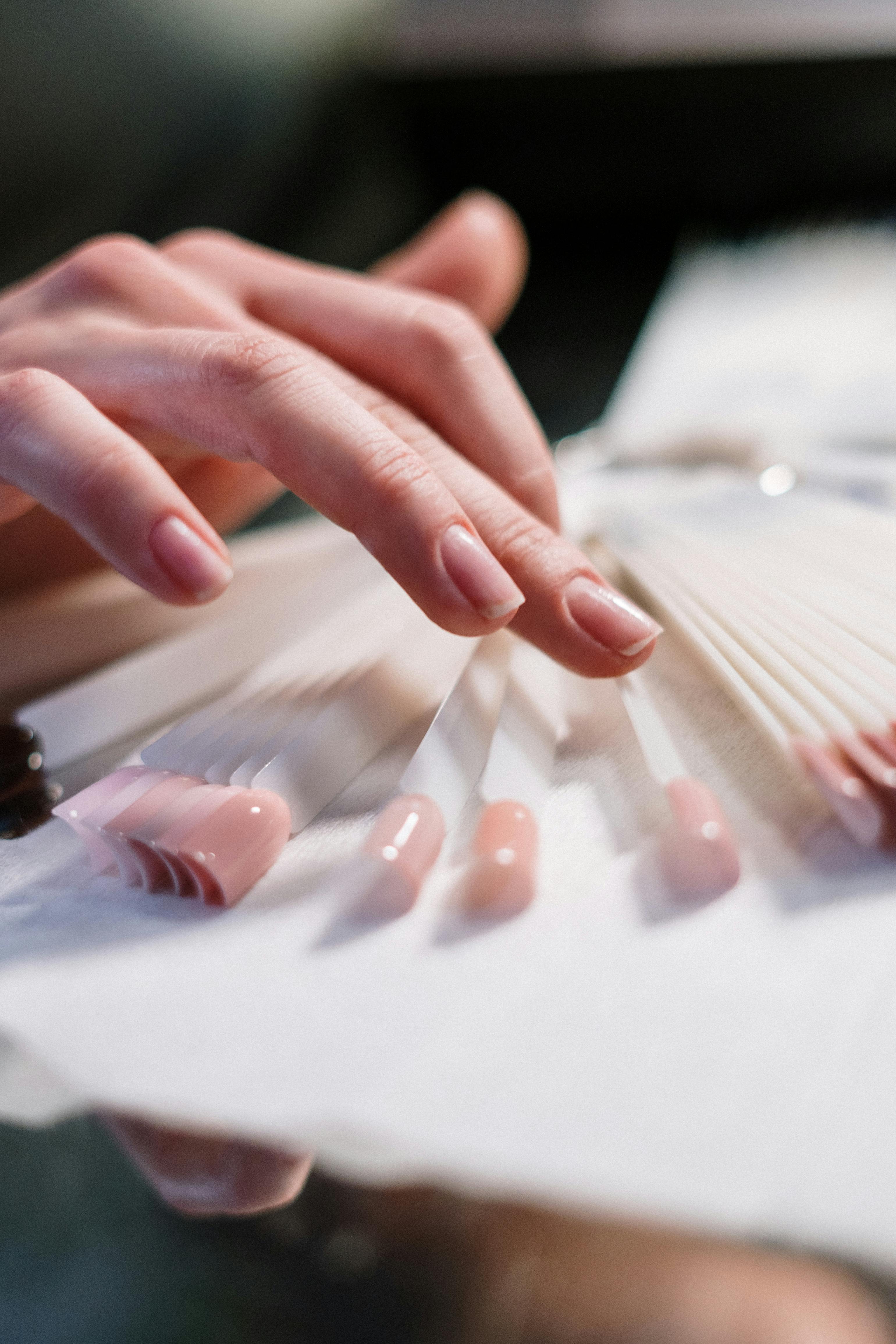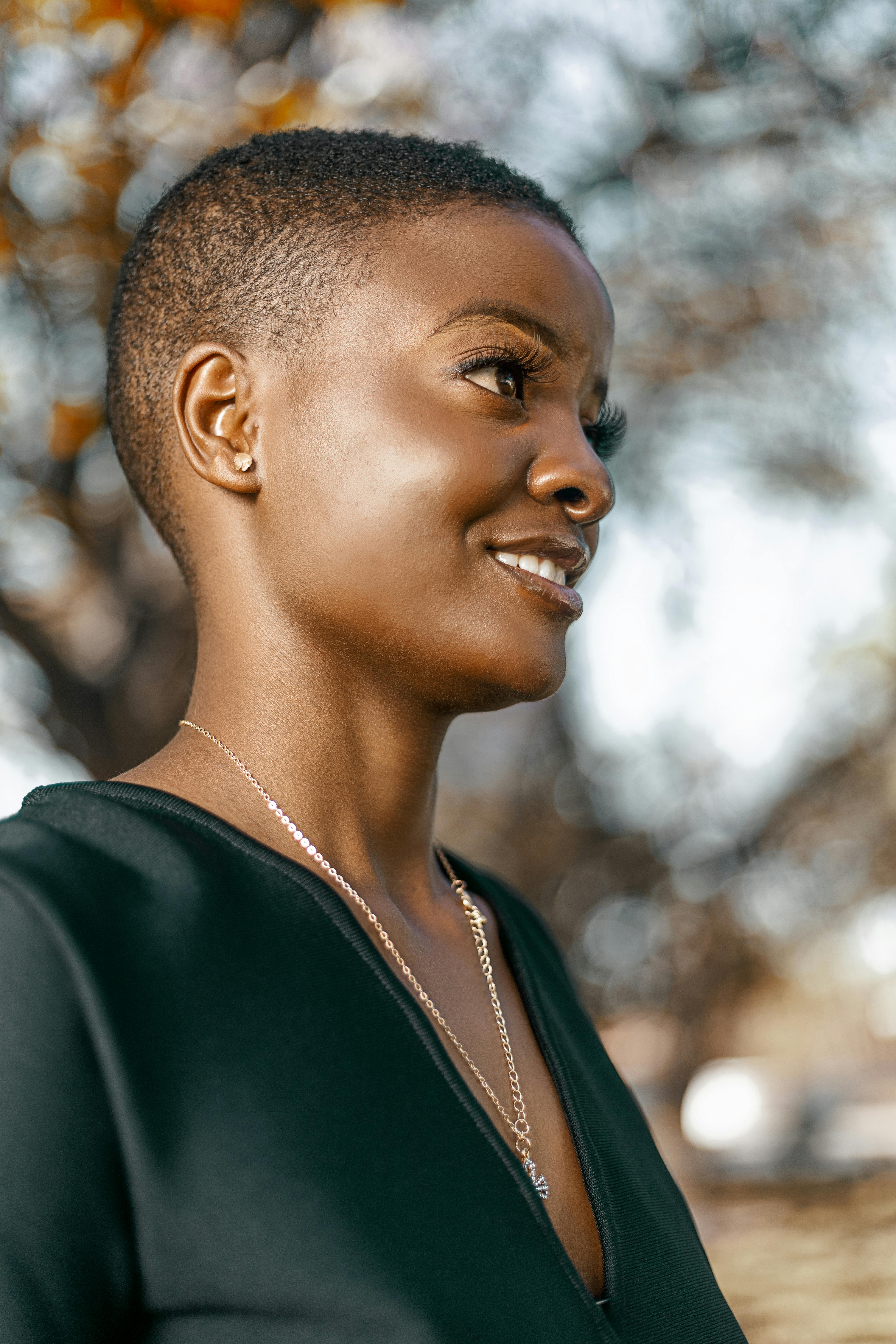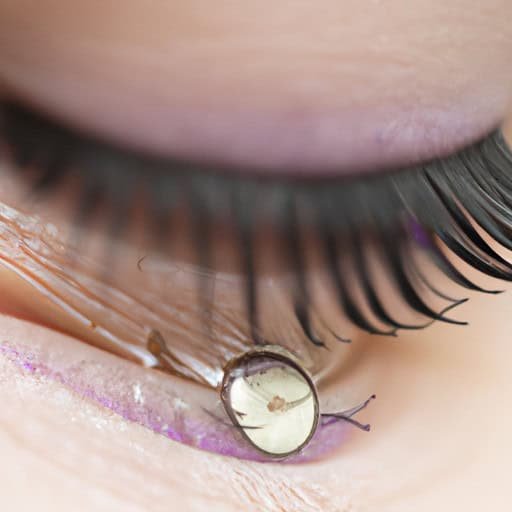Have you ever wondered how beauty experts determine which type of eyelash extensions are perfect for you? In this article, we will explore the intricate process of assessing a client’s suitability for eyelash extensions and selecting the right type. By considering factors such as natural lash condition, eye shape, and personal preferences, professionals ensure that you walk away with a stunning set of lashes that perfectly complement your unique features. Join us as we unveil the secrets behind this artful selection process.
Client Consultation
Understanding the Client’s Needs and Preferences
During the client consultation process, the first step is to understand the client’s needs and preferences. This involves actively listening to what the client wants to achieve with their eyelash extensions. Some clients may desire a natural and subtle look, while others may be seeking a more dramatic and voluminous effect. By understanding the client’s preferences, we can ensure that the end result aligns with their expectations.
Assessing the Client’s Eye Shape and Natural Lashes
To determine the most suitable type of eyelash extensions, experts need to assess the client’s eye shape and natural lashes. Each eye shape requires different techniques and styles to enhance its natural beauty. For example, clients with almond-shaped eyes may benefit from a cat-eye effect, while those with round eyes might prefer a doll-eye look. Additionally, examining the length, thickness, and curl of the client’s natural lashes is crucial to determine the appropriate extension weight.
Discussing the Desired Length and Volume
Another essential aspect of the client consultation is discussing the desired length and volume. The desired length depends on the client’s preference and the effect they want to achieve. It is crucial to find a balance between a natural look and the client’s desire for longer lashes. Additionally, discussing the desired volume allows us to assess if the client wants a more natural or dramatic effect. By truly understanding the client’s expectations, experts can ensure that the chosen eyelash extension style meets their desired length and volume.
Health and Allergy Assessment
Checking for Any Eye Infections or Conditions
Before proceeding with eyelash extensions, it is vital to check for any existing eye infections or conditions. This is to ensure the client’s safety and prevent any potential complications. An infected or irritated eye is not suitable for eyelash extension application. By thoroughly examining the client’s eyes, experts can determine if they are in good health and ready for the procedure.
Inquiring About Known Allergies and Sensitivities
To avoid allergic reactions, experts inquire about any known allergies and sensitivities the client may have. The adhesive used for eyelash extensions contains certain ingredients that can cause allergic reactions in some individuals. By gathering information about the client’s allergic history, experts can take necessary precautions to minimize the risk of an adverse reaction.
Performing a Patch Test for Adhesive
As an additional safety measure, a patch test for the adhesive is often performed on the client’s skin prior to the application. This involves applying a small amount of adhesive on the client’s skin, usually behind the ear or on the forearm, and monitoring for any signs of irritation or allergic reactions over a 24-48 hour period. A patch test helps identify potential sensitivities and ensures that the client can tolerate the adhesive used during the eyelash extension procedure.

Natural Lash Evaluation
Checking the Length, Thickness, and Curl of Natural Lashes
Evaluating the client’s natural lashes is crucial to determine the appropriate type and placement of eyelash extensions. This evaluation involves checking the length, thickness, and curl of the natural lashes. By observing these qualities, experts can understand the natural characteristics of the client’s lashes and determine the best course of action for extension application.
Assessing the Natural Lash Health and Strength
Apart from considering the external features of the natural lashes, experts also assess the overall health and strength of the lashes. Healthy lashes provide a solid foundation for eyelash extensions and ensure long-lasting results. If the natural lashes are weak or damaged, experts may recommend lash treatments or suggest alternative types of extensions that are gentler on the natural lashes.
Determining the Appropriate Extension Weight
Understanding the weight of the eyelash extensions is vital to ensure that they do not overwhelm the natural lashes. The weight of the extensions should be proportionate to the natural lashes to avoid discomfort or premature shedding. Experts consider the thickness and density of the natural lashes to determine the appropriate extension weight that will provide the desired length and volume without causing any strain on the natural lashes.
Eye Shape Analysis
Identifying the Client’s Eye Shape
Identifying the client’s eye shape is fundamental in determining the most suitable eyelash extension style. There are various eye shapes, including almond, round, hooded, and monolid, each requiring different techniques and application methods to enhance their beauty. By accurately identifying the client’s eye shape, experts can create a customized extension design that will complement and accentuate their natural features.
Considering the Desired Effect (Cat Eye, Doll Eye, etc.)
The desired effect plays a significant role in choosing the right eyelash extension style. Some clients may desire a cat-eye effect, which elongates the eyes and adds a seductive appeal. Others may prefer a doll-eye look, creating the illusion of larger, more open eyes. Understanding the client’s desired effect allows experts to select the appropriate extension style that will achieve the desired outcome.
Choosing the Right Eyelash Extension Style
Based on the client’s eye shape and desired effect, experts can choose the right eyelash extension style. There are various styles to choose from, including classic, hybrid, and volume lashes. Classic lashes provide a natural and subtle enhancement, while hybrid lashes combine classic and volume techniques for a fuller yet still natural appearance. Volume lashes are ideal for clients seeking a more dramatic and voluminous look. By carefully considering these factors, experts can select the most suitable extension style to enhance the client’s natural beauty.

Extension Material Selection
Discussing Different Extension Materials (Synthetic, Mink, Silk)
Experts discuss the different extension materials available, including synthetic, mink, and silk. Synthetic lashes are made from man-made fibers and offer a cost-effective option. Mink lashes are sourced from mink fur and provide a natural and luxurious look. Silk lashes are made from synthetic silk fibers and offer a softer and more lightweight alternative. By explaining the characteristics of each material, experts can guide the client in selecting the best option for their desired look and budget.
Explaining the Pros and Cons of Each Material
When discussing extension materials, it is essential to explain the pros and cons of each option. Synthetic lashes are durable but may lack the natural appearance of other materials. Mink lashes offer a luxurious look but may be more expensive. Silk lashes provide a soft and lightweight feel but may not be as durable as synthetic lashes. By providing comprehensive information, experts help the client make an informed decision based on their preferences and priorities.
Considering the Client’s Budget and Longevity Expectations
The client’s budget and longevity expectations are significant factors when selecting extension materials. Some clients may have a specific budget in mind, and experts can recommend materials that align with their financial constraints. Additionally, discussing longevity expectations is essential to set realistic expectations for how long the extensions will last before requiring a fill. Experts take into account these considerations to ensure the client receives an experience that meets their needs and suits their financial circumstances.
Curl Type Determination
Understanding Different Curl Types (J, B, C, D, L)
Experts have a thorough understanding of different curl types used in eyelash extensions. Curl types are denoted by letters such as J, B, C, D, and L, each representing a different level of curl. J curls provide a natural and subtle lift, while B and C curls offer a more prominent curl, creating a mesmerizing effect. D and L curls provide the most dramatic lift, perfect for clients seeking a bold and voluminous look.
Assessing the Natural Lash Curl and Desired Look
To determine the most suitable curl type, experts assess the client’s natural lash curl and desired look. If the client has naturally straight lashes, a more significant curl may be necessary to achieve the desired effect. Conversely, if the client’s natural lashes already have a pronounced curl, a subtler curl type might be more appropriate. By considering these factors, experts can select the curl type that will complement the client’s natural lashes and create the desired look.
Selecting the Most Suitable Curl Type
Based on the client’s natural lash curl and desired look, experts select the most suitable curl type for their eyelash extensions. It is essential to find a curl that enhances the natural beauty of the client’s eyes and ensures a seamless blend between the natural and extension lashes. By carefully considering the curl type, experts can achieve a result that appears cohesive, natural, and visually appealing.

Length and Thickness Consideration
Choosing the Right Extension Length for a Natural Look
When selecting the extension length, experts aim to achieve a natural look that enhances the client’s features without appearing overly dramatic or unnatural. The length of the extensions should complement the client’s eye shape and face structure. By carefully selecting the appropriate length, experts ensure that the extensions blend seamlessly with the natural lashes, creating a harmonious and elegant appearance.
Determining the Maximum Length Based on Natural Lashes
While achieving the desired length is essential, it is crucial not to exceed the natural lashes’ limits. Determining the maximum length based on the client’s natural lashes helps prevent strain and premature shedding. Experts take into account the natural lash’s health, strength, and ability to support the extensions when determining the maximum length. This ensures that the extensions are safe, comfortable, and long-lasting.
Considering the Thickness for Desired Volume
To achieve the desired volume, experts consider the appropriate thickness for the extensions. Thicker extensions result in a more dramatic and voluminous look, while thinner extensions provide a more subtle enhancement. By discussing the client’s desired volume level, experts can recommend the appropriate thickness that will create the desired effect without overwhelming the natural lashes.
Volume Lash Decision
Understanding the Difference between Classic and Volume Lashes
Understanding the difference between classic and volume lashes is essential in making an informed decision. Classic lashes involve applying one extension to each natural lash, resulting in a natural and subtle enhancement. In contrast, volume lashes involve applying multiple lightweight extensions to each natural lash, creating a fuller and more dramatic effect. By explaining these distinctions, experts can help the client choose the style that aligns with their desired look.
Assessing the Desired Dramatic Effect
To determine whether a client would benefit from classic or volume lashes, experts assess their desired dramatic effect. If the client prefers a more natural and subtle enhancement, classic lashes may be the best choice. However, if the client desires a bolder and more voluminous look, volume lashes may be more suitable. By considering the client’s preferences, experts can recommend the style that will provide the desired level of drama.
Deciding on the Appropriate Volume Lash Technique
Choosing the appropriate volume lash technique depends on various factors, such as the client’s natural lashes, desired volume level, and overall eye shape. There are different volume techniques, including 2D, 3D, and even up to 6D, which refer to the number of extensions applied to each natural lash. Experts consider these factors to ensure that the chosen volume lash technique enhances the client’s natural beauty and creates the desired effect.
Application Technique Selection
Explaining Different Application Techniques (One by One, Russian Volume)
Experts explain the different application techniques available, such as the one-by-one technique and Russian volume technique. The one-by-one technique involves individually applying one extension to each natural lash. This meticulous technique provides a natural and seamless look. Russian volume, on the other hand, involves applying multiple lightweight extensions in a fan shape to each natural lash, creating a fuller and more voluminous appearance. By explaining these techniques, experts can help the client understand the process and choose the one that aligns with their desired look.
Considering the Available Time for Application
The available time for the application is an essential consideration when selecting the application technique. The one-by-one technique requires more time as each lash is individually applied, making it ideal for clients who can allocate a longer duration for the procedure. Russian volume, on the other hand, can be a quicker option as multiple extensions are applied simultaneously. By considering the available time, experts can recommend the application technique that fits within the client’s schedule.
Assessing the Lash Artist’s Expertise and Experience
The expertise and experience of the lash artist are crucial when selecting the application technique. Different techniques require varying levels of skill and precision. Experts assess their own abilities and experience to determine which application technique they are most proficient in. By considering their expertise, experts can provide the client with high-quality results and ensure a pleasant and satisfactory experience.
Aftercare Instructions
Providing Post-Extension Care Guidelines
Aftercare is essential to maintain the longevity and quality of the eyelash extensions. Experts provide post-extension care guidelines to ensure the client knows how to properly care for their new lashes. These guidelines may include avoiding oil-based products, refraining from rubbing or pulling the lashes, and gentle cleansing techniques. By educating the client on proper aftercare, experts help them prolong the lifespan of their extensions and maintain their appearance.
Explaining the Importance of Regular Fills
Regular fills are crucial to maintain the fullness and integrity of the eyelash extensions. As the client’s natural lashes shed, the extensions also fall out, resulting in sparse areas. Experts explain the importance of regular fills to replenish any lost extensions and maintain a consistent and even appearance. By emphasizing this aspect, experts ensure that the client understands the commitment required for long-lasting and beautiful lashes.
Ensuring the Client Understands Proper Maintenance
Proper maintenance is key to preserving the quality and longevity of eyelash extensions. Experts ensure that the client understands the importance of gentle handling, avoiding excessive heat or moisture, and refraining from using mechanical eyelash curlers. By educating the client on proper maintenance, experts empower them to take good care of their extensions and achieve the best possible results.
In conclusion, to assess a client’s suitability for eyelash extensions and choose the right type, experts go through a comprehensive consultation process. This involves understanding the client’s needs and preferences, evaluating their eye shape and natural lashes, analyzing the desired length and volume, assessing health and allergy considerations, selecting appropriate extension materials, determining the curl type, considering length and thickness, deciding on volume lashes, selecting application techniques, and providing aftercare instructions. By considering these factors and tailoring the choices to the client’s individual characteristics and preferences, experts can ensure a successful and satisfying eyelash extension experience.

